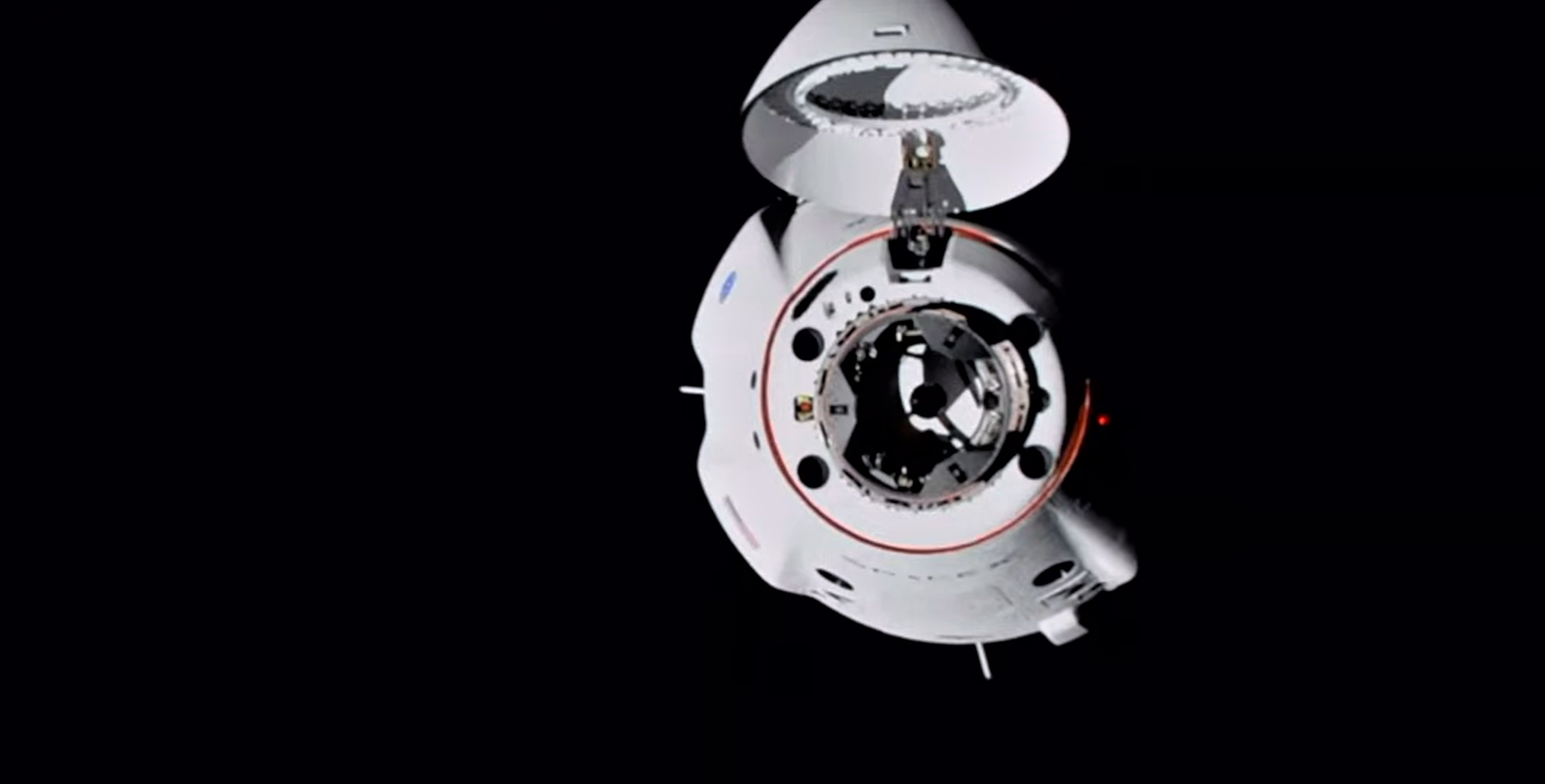
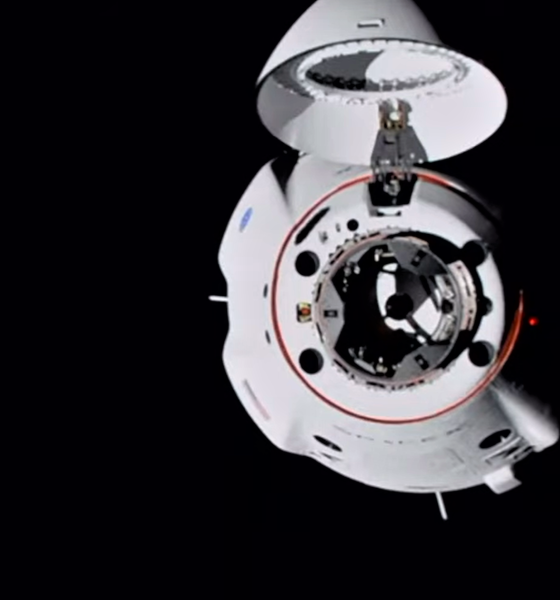
News
SpaceX Crew Dragon aces third autonomous space station docking
Update: A SpaceX Crew Dragon has successfully performed an autonomous rendezvous and docking with the International Space Station (ISS) for the third time in a row and the first time with four astronauts aboard.
Near-flawless space station arrival now behind it, Crew Dragon has effectively kicked off what could be the longest continuous spaceflight of a crewed US spacecraft in the history of American space exploration. Barring surprises, Crew Dragon capsule C207 (deemed “Resilience” by its first crew) and its expendable trunk section will spend roughly 180 days in orbit, crushing the previous US record of 84 days set by an Apollo Command and Service Module spacecraft in 1973.
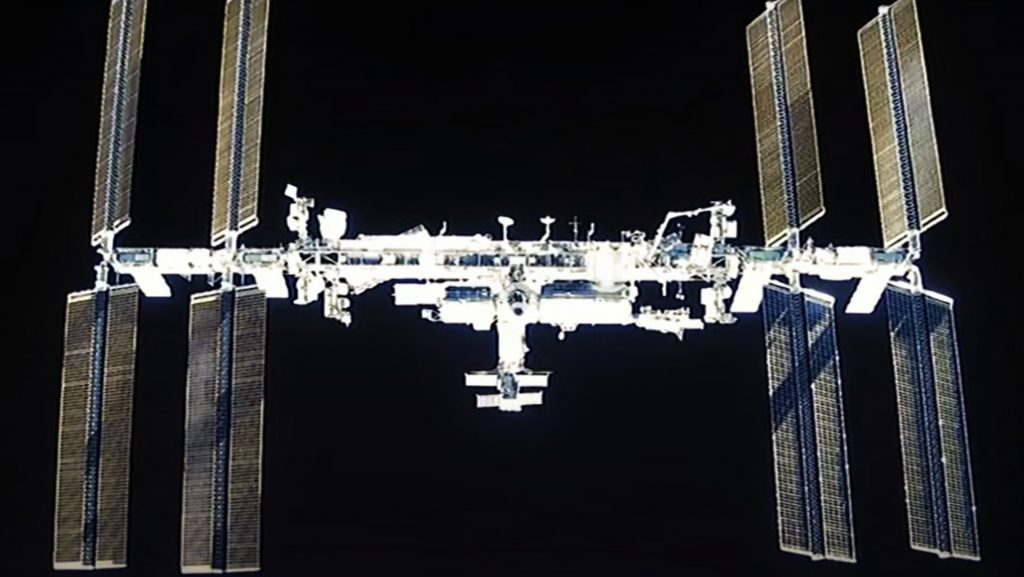

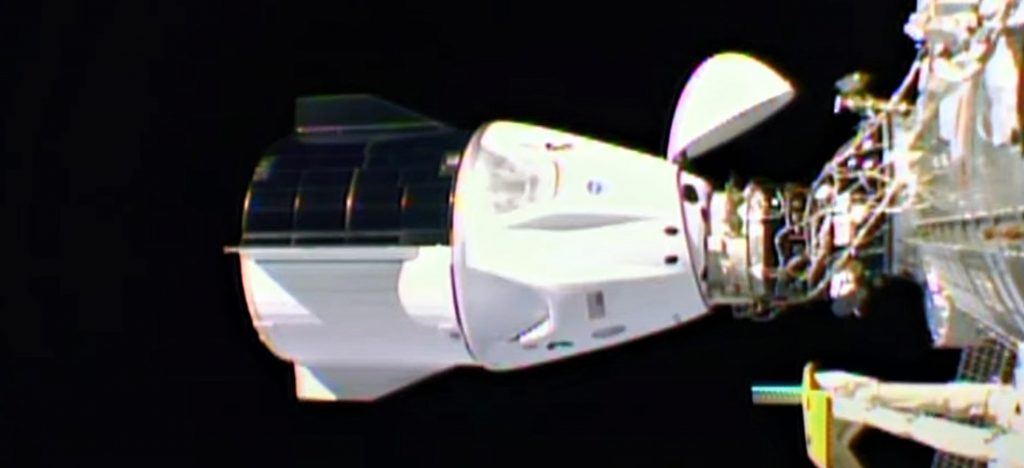
Crew Dragon’s first successful operational space station arrival also marks the beginning of a small but significant new era for the ISS, enabling a crew of seven astronauts – up from six – to continuously live and work aboard the 20-year-old orbital outpost. Thanks to the station’s well-quantified needs for regular maintenance and operational expertise, that new seventh crew member will ultimately be able to dedicate almost every working moment to doing science in orbit.
Meanwhile, ISS NASA astronaut Kate Rubins hinted to SpaceX and NASA ground control that a range of photos she took of Crew Dragon’s third ISS arrival were likely to be spectacular. A ground controller took no time to respond with the quip that “[Crew Dragon] is known objectively to be a very good-looking vehicle.” Stay tuned for another update when those approach photos go live.
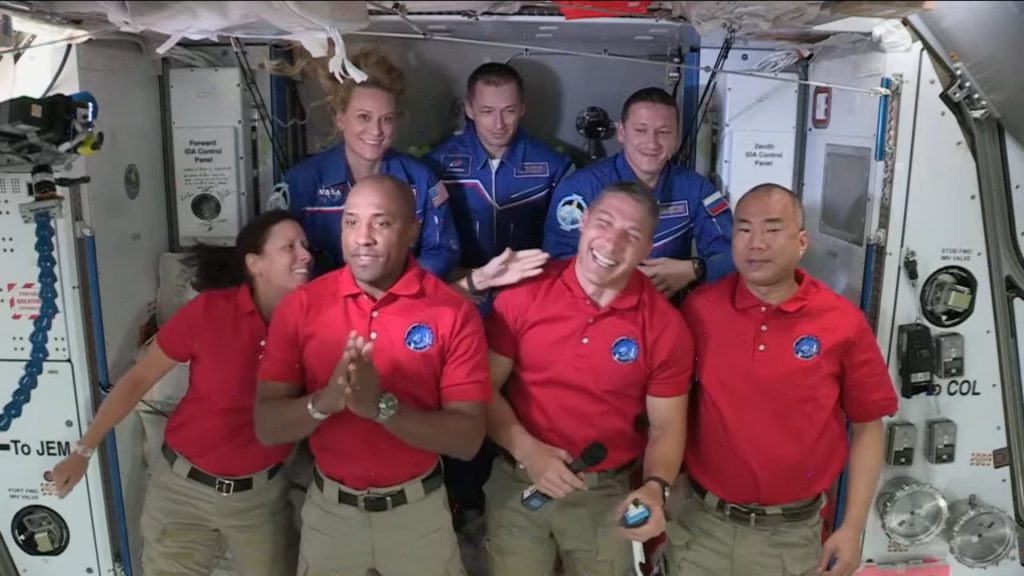
Approximately two hours after Crew Dragon’s third successful docking, Rubins successfully completed an array of tasks and opened the spacecraft’s hatch, allowing NASA astronauts Mike Hopkins, Shannon Walker, Victor Glover, and JAXA astronaut Soichi Noguchi to officially depart Dragon and join the International Space Station’s existing crew of three.
A SpaceX Crew Dragon is set to rendezvous and dock with the International Space Station for the third time later tonight and its four-astronaut crew took some time during their 27-hour flight to give live viewers a tour of the brand new spacecraft.
Emphasizing just how much space Crew Dragon offers its astronaut passengers once in orbit, the tour also included a minor tradition for NASA astronaut Victor Glover’s first orbital spaceflight. Astronauts Soichi Noguchi, Mike Hopkins, and Shannon Walker – all spaceflight veterans – commemorated Glover’s milestone with the gift of a small, golden pin, continuing a decades-old tradition.
If Crew Dragon remains in good health, the four astronauts will officially kick off the first ISS docking attempt with a 90-second thruster burn shortly after 9 pm EST (02:00 UTC).
Quite similar to Crew Dragon’s flawless Demo-2 astronaut launch debut, the Crew-1 spacecraft is scheduled to arrive at what is known as the ISS keep-out sphere around half an hour after its final major course-change thruster burn. Dragon will pause approximately 400m (~1300 ft) from the space station and wait for ground and station teams to give it the go-ahead to continue to another stopped point 20m (65 ft) out.
Altogether, the Crew-1 Dragon docking process will take about 55 minutes after the spacecraft enters the keep-out sphere and will culminate with a ‘soft’ capture around 11pm EST (04:00 UTC) and a ‘hard’ capture – signified by the docking port firmly bolting Dragon to the ISS – a bit less than 15 minutes later.
Orbital sunset is expected roughly 10 minutes before docking, meaning that Crew Dragon’s Crew-1 docking should be sunlit from a distance of ~1000 to 20 meters (3300 to 65 ft) from the ISS. Tune in below to watch the historic docking live.

News
Tesla FSD fleet is nearing 7 billion total miles, including 2.5 billion city miles
As can be seen on Tesla’s official FSD webpage, vehicles equipped with the system have now navigated over 6.99 billion miles.

Tesla’s Full Self-Driving (Supervised) fleet is closing in on almost 7 billion total miles driven, as per data posted by the company on its official FSD webpage.
These figures hint at the massive scale of data fueling Tesla’s rapid FSD improvements, which have been quite notable as of late.
FSD mileage milestones
As can be seen on Tesla’s official FSD webpage, vehicles equipped with the system have now navigated over 6.99 billion miles. Tesla owner and avid FSD tester Whole Mars Catalog also shared a screenshot indicating that from the nearly 7 billion miles traveled by the FSD fleet, more than 2.5 billion miles were driven inside cities.
City miles are particularly valuable for complex urban scenarios like unprotected turns, pedestrian interactions, and traffic lights. This is also the difference-maker for FSD, as only complex solutions, such as Waymo’s self-driving taxis, operate similarly on inner-city streets. And even then, incidents such as the San Francisco blackouts have proven challenging for sensor-rich vehicles like Waymos.
Tesla’s data edge
Tesla has a number of advantages in the autonomous vehicle sector, one of which is the size of its fleet and the number of vehicles training FSD on real-world roads. Tesla’s nearly 7 billion FSD miles then allow the company to roll out updates that make its vehicles behave like they are being driven by experienced drivers, even if they are operating on their own.
So notable are Tesla’s improvements to FSD that NVIDIA Director of Robotics Jim Fan, after experiencing FSD v14, noted that the system is the first AI that passes what he described as a “Physical Turing Test.”
“Despite knowing exactly how robot learning works, I still find it magical watching the steering wheel turn by itself. First it feels surreal, next it becomes routine. Then, like the smartphone, taking it away actively hurts. This is how humanity gets rewired and glued to god-like technologies,” Fan wrote in a post on X.
News
Tesla starts showing how FSD will change lives in Europe
Local officials tested the system on narrow country roads and were impressed by FSD’s smooth, human-like driving, with some calling the service a game-changer for everyday life in areas that are far from urban centers.

Tesla has launched Europe’s first public shuttle service using Full Self-Driving (Supervised) in the rural Eifelkreis Bitburg-Prüm region of Germany, demonstrating how the technology can restore independence and mobility for people who struggle with limited transport options.
Local officials tested the system on narrow country roads and were impressed by FSD’s smooth, human-like driving, with some calling the service a game-changer for everyday life in areas that are far from urban centers.
Officials see real impact on rural residents
Arzfeld Mayor Johannes Kuhl and District Administrator Andreas Kruppert personally tested the Tesla shuttle service. This allowed them to see just how well FSD navigated winding lanes and rural roads confidently. Kruppert said, “Autonomous driving sounds like science fiction to many, but we simply see here that it works totally well in rural regions too.” Kuhl, for his part, also noted that FSD “feels like a very experienced driver.”
The pilot complements the area’s “Citizen Bus” program, which provides on-demand rides for elderly residents who can no longer drive themselves. Tesla Europe shared a video of a demonstration of the service, highlighting how FSD gives people their freedom back, even in places where public transport is not as prevalent.
What the Ministry for Economic Affairs and Transport says
Rhineland-Palatinate’s Minister Daniela Schmitt supported the project, praising the collaboration that made this “first of its kind in Europe” possible. As per the ministry, the rural rollout for the service shows FSD’s potential beyond major cities, and it delivers tangible benefits like grocery runs, doctor visits, and social connections for isolated residents.
“Reliable and flexible mobility is especially vital in rural areas. With the launch of a shuttle service using self-driving vehicles (FSD supervised) by Tesla in the Eifelkreis Bitburg-Prüm, an innovative pilot project is now getting underway that complements local community bus services. It is the first project of its kind in Europe.
“The result is a real gain for rural mobility: greater accessibility, more flexibility and tangible benefits for everyday life. A strong signal for innovation, cooperation and future-oriented mobility beyond urban centers,” the ministry wrote in a LinkedIn post.
News
Tesla China quietly posts Robotaxi-related job listing
Tesla China is currently seeking a Low Voltage Electrical Engineer to work on circuit board design for the company’s autonomous vehicles.

Tesla has posted a new job listing in Shanghai explicitly tied to its Robotaxi program, fueling speculation that the company is preparing to launch its dedicated autonomous ride-hailing service in China.
As noted in the listing, Tesla China is currently seeking a Low Voltage Electrical Engineer to work on circuit board design for the company’s autonomous vehicles.
Robotaxi-specific role
The listing, which was shared on social media platform X by industry watcher @tslaming, suggested that Tesla China is looking to fill the role urgently. The job listing itself specifically mentions that the person hired for the role will be working on the Low Voltage Hardware team, which would design the circuit boards that would serve as the nervous system of the Robotaxi.
Key tasks for the role, as indicated in the job listing, include collaboration with PCB layout, firmware, mechanical, program management, and validation teams, among other responsibilities. The role is based in Shanghai.
China Robotaxi launch
China represents a massive potential market for robotaxis, with its dense urban centers and supportive policies in select cities. Tesla has limited permission to roll out FSD in the country, though despite this, its vehicles have been hailed as among the best in the market when it comes to autonomous features. So far, at least, it appears that China supports Tesla’s FSD and Robotaxi rollout.
This was hinted at in November, when Tesla brought the Cybercab to the 8th China International Import Expo (CIIE) in Shanghai, marking the first time that the autonomous two-seater was brought to the Asia-Pacific region. The vehicle, despite not having a release date in China, received a significant amount of interest among the event’s attendees.








